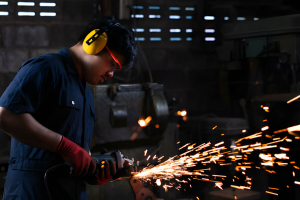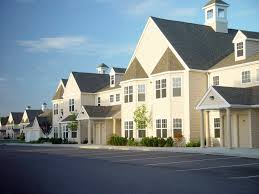Working in an industrial setting means listening to the constant hum of machinery. Usually, this goes unnoticed. The noise becomes part of the activity and daily life. However, the problem arises when this prolonged exposure to loud noises leaves manufacturing workers with temporary or permanent hearing loss. The issue is that hearing loss doesn’t happen in a single day. As your ears are exposed to dangerous levels of noise for several hours regularly, it slowly starts to show signs of hearing loss. It may start with ringing noises in the ears or difficulty understanding conversations, and when the signs are ignored, it results in permanent loss of hearing. And there’s no cure for this.

The only way to combat this irreversible condition is to take steps to protect your hearing, especially if you are part of the thriving manufacturing industry. Here are some key tips to help manufacturing workers protect their hearing, along with briefly touching upon the subject of noise-induced hearing loss and the steps that employers must take to create a safe working environment.
What is the reality of NIHL (noise-induced hearing loss)?
Manufacturing workers are constantly exposed to noise exceeding 85 decibels because they are working around machines and tools. About 46% of all workers in manufacturing are exposed to hazardous noise. This constant exposure damages the delicate hair cells within the inner ear and leads to NIHL.
At first, you will have difficulty hearing conversations and faint sounds, there might be a buzzing or ringing sensation in the ears, and the speech will seem muffled. You may have an increased sensitivity to certain sounds. With these signs ignored, it will result in permanent loss of hearing.
It is essential to note that NIHL not only impacts one’s physical health but also one’s ability to communicate and be productive in the workplace. Hence, you must take proactive steps to protect your hearing.
What role does the employer have in protecting hearing?
Employers have a moral and legal obligation to protect the hearing health of their employees. OSHA (the occupational safety and health administration) enforces certain regulations that outlines the permissible level of noise that workers can be exposed to during their working hours. This requires employers to implement a hearing conservation program and take other steps to ensure the noise level is reduced.
Tips for manufacturing workers to improve ear protection
Knowledge and awareness
The first line of defense is knowledge and awareness regarding hearing loss and the dangerous noise levels that you might be exposed to at your workplace.
- Educate yourself about NIHL and learn the dangers of noise exposure. Know how prolonged exposure to loud noise levels can damage the delicate hair cells within your inner ear. Also, learn of the symptoms of NIHL so you can take steps before it is too late.
- You also need to familiarize yourself with safe noise exposure limits that are set by OSHA and other regulatory bodies.
Use a hearing protection device
Hearing protection devices are your shield against noise. These devices are your primary defense against NIHL damage. You must commit to wearing them regularly whenever noise levels in your work area exceed safe limits.
Since there are different types of hearing protection devices, it is essential to find the right fit. All of them are not created equal, and that’s why it would be best to explore all the available options before making your decision. Some of the common options include:
- Earbuds – Earbuds are small and offer to reduce some loud sounds to less dangerous levels. If you want the best results, you can opt for Bluetooth moulded earbuds with passive hearing protection. The earbuds are molded according to the shape of your ear so they fit perfectly and offer you the desired hearing protection. Thanks to the Bluetooth technology, it allows the employees to stay connected while avoiding loud noise.
- Earplugs – Earplugs are versatile and come in reusable or disposable forms. The disposable ones are good for occasional use but since you work in a manufacturing setting, it would be best to opt for the reusable ones. They are much more sustainable and are perfect for long-term use.
- Earmuffs – Earmuffs offer complete ear enclosure and are ideal for environments with high noise levels. You can look for earmuffs with padded ear cups and adjustable headbands for a comfortable and secure fit.
- Canal caps – These are lightweight options that comfortably fit within the ear canal and a good option for workers who find earmuffs and earplugs bulky.
When choosing hearing protection devices to safeguard your listening, you must always keep comfort as the top priority. As you have to wear the hearing protector for long hours, it must be comfortable.
Regularly inspect and maintain the hearing protection devices
Hearing protection devices require regular maintenance and replacement so they function optimally. You must make it a habit to inspect the device and look for any wear and tear signs. It is also recommended that the hearing protection devices are properly disinfected to ensure there’s no spread of germs.
Don’t be afraid to speak up
In a manufacturing environment, clear communication is encouraged. If you find it difficult to understand instructions or have trouble communicating with your colleagues while wearing hearing protection devices, you must not be afraid to speak to your supervisor or manager. They might be able to suggest alternative methods or a different hearing protection device that offer more clarity.
Additional things to remember:
- Early detection is key to preventing NIHL. You must schedule regular tests with your audiologists to ensure your hearing is impeccable. Also, these regular tests will allow for timely identification of hearing loss so you can take steps.
- Employers must regularly review their hearing conservation program, and as employees, you can also do your part by sending feedback.
So, are you engaged in manufacturing work? What steps are you taking to protect the health of your ears? Share your valued experience to help fellow manufacturing workers in preventing NIHL.



Leave a Reply